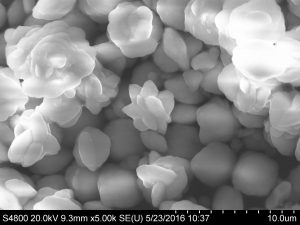 Inoka Widanagamage
Inoka Widanagamage
Instructional Associate Professor,
Geology and Geological Engineering
ihwidana@olemiss.edu
118 D Carrier Hall, University, MS 38677
Google Scholar Profile
Research Gate: Inoka_Widanagamage
Experience
University of Mississippi – Instructional Associate Professor, August 2023 – present
University of Mississippi – Instructional Assistant Professor, August 2018 – 2023
University of Mississippi – Instructor, 2016 – 2018
Rutgers, The State University of New Jersey – Postdoctoral Associate, 2015 – 2016
Education
Kent State University – Ph.D., Applied Geology, 2015
Kent State University – M.S., Geology, 2011
University of Peradeniya, Sri Lanka – B.S.,Geology, 2008
Research interests
Dr. Inoka’s research goals intersect among trace metal geochemistry/isotope geochemistry and bio-geochemistry of environments focusing on how the microbial world affects and drives metal cycling in both modern and ancient environments. Specific areas of interest include:
- Non-traditional stable isotope analysis as a proxy for Early Earth conditions and extraterrestrial materials
- Crystal formation and diversity in morphology
- Water quality/ICP-OES analysis on trace and heavy metals on geological substrates
- Environmental education
- Precambrian research revealing tectonic history
- Petrology and mineralogy
RECENT PROJECTS
 Controls on barite crystal morphology during abiotic precipitation
Controls on barite crystal morphology during abiotic precipitation
This piece of work is to determine what changes can expect in barite crystals during abiotic ‘precipitation of barite at different laboratory conditions. Temperature, initial saturation index, Sr/Ba ratio in solution, presence of organics were some of the parameters tested. Crystals were imaged under SEM and Confocal Raman Microscope followed by bulk XRD analyses. Different morphologies were identified in particularly at higher Sr/Ba ratios and temperatures. This work has been submitted for a publication.
 Trace metal cycling and bio signatures in White Sand Monument (WSM)
Trace metal cycling and bio signatures in White Sand Monument (WSM)
White Sands are rich in mineral Gypsum and the occurrence is considered as extreme environmental condition. Trace metal concentrations and DNA data were collected in the study and in the process of building up relationship between metal cycling and metabolism of those biosignatures in the sand. This information will be important in understanding potential analogues conditions in Mars.
 Unravelling metamorphism and collisional history of Highland-Vijayan Boundary- Sri Lanka
Unravelling metamorphism and collisional history of Highland-Vijayan Boundary- Sri Lanka
Sri Lanka, a small-scale aggregate of contrasting crustal domains, has been the focus of lower crustal research for the past two decades. The timing of high-grade granulite metamorphism in the central Highland Complex (HC) of Sri Lanka is well-constrained at 570-550 Ma (Kroner et al., 1994; Sajeev et al., 2010). Amphibolite facies metamorphism of the adjacent Vijayan Complex (VC) to the east is less well constrained but apparently somewhat younger (Holzl et al., 1994). Additionally, the timing and nature of juxtaposition (via thrusting) of the HC above the VC is uncertain. The contact between the HC and VC, characterized by strong deformation, exotic tectonic slivers, migmatites, local serpentinite bodies, magnetite deposits, and gold mineralization is a major suture separating the Paleoproterozoic HC from the Grenville-age VC. EMPA in-situ spot-dating of monazite grains record timing of peak and retrograde metamorphism of HC rocks. Thirty spot ages from eight monazite grains from the HC reveals a dominance of Pan African ages (533-613 Ma), and minor Paleoproterozoic and Mesoproterozoic ages (1069-1872 Ma). The qualitative monazite textural descriptions suggest that the age data are a function of chemical domains formed during and/or re-absorption of monazite. The average age for higher Y concentrations (>4000 ppm) is 558 Ma and 572 Ma age for lower Y concentrations (<\4000 ppm). These ages consistent with a regionally widespread peak metamorphic age of 570 Ma for HC followed by retrograde metamorphism during exhumation at about 555-545 Ma (Sajeev et al., 2010). The Boundary Zone age data suggest shearing of HC rocks at moderate P-T conditions at 595-635 Ma and may therefore date the initial juxtaposition of the HC and VC terranes. The crustal thickening during and after the juxtaposition may have ultimately led to the peak metamorphism of Highland Complex at 570 Ma. Peak metamorphism was followed closely by rapid exhumation of the HC rocks beginning at 558 Ma in the east and 551 Ma in the western HC terrane.